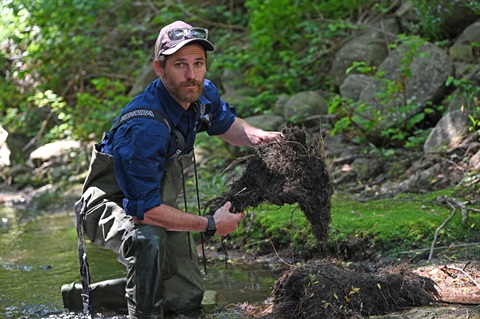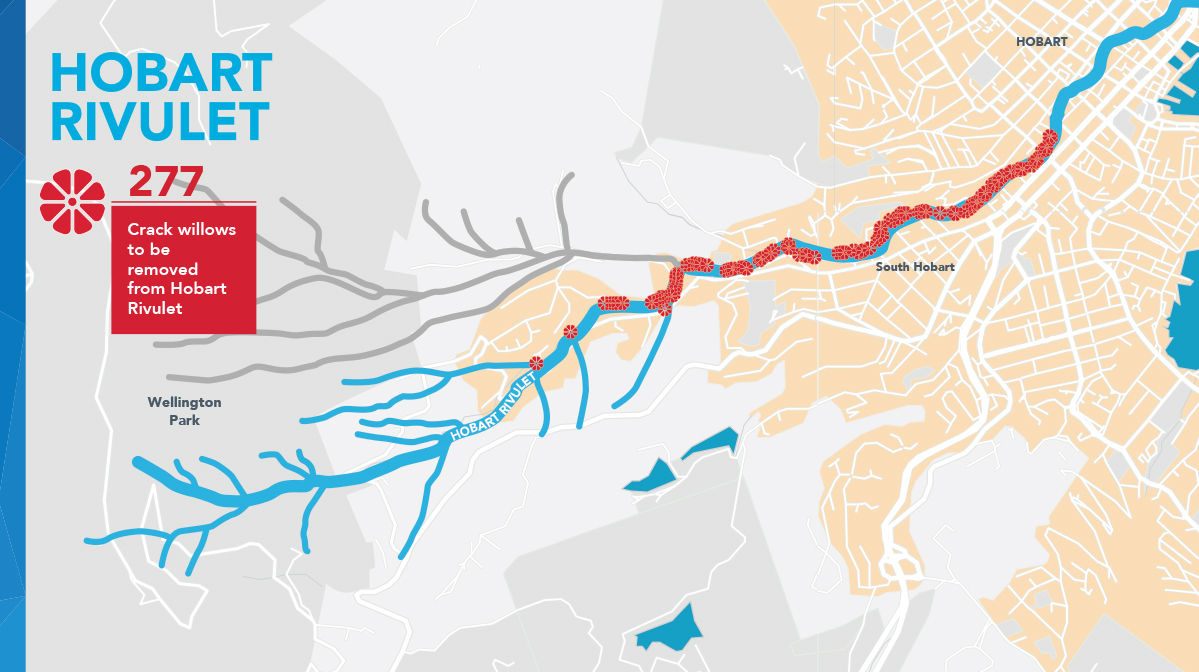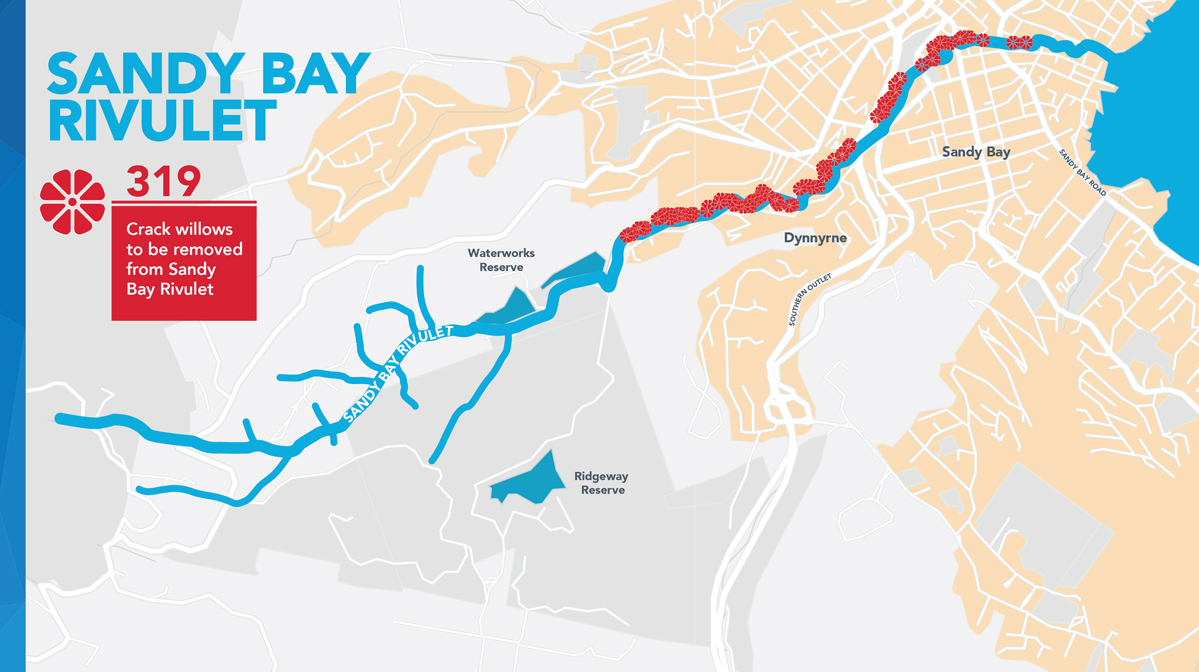Hobart crack willow removal project

We are working to rid Hobart's rivulets and catchments of the crack willow (Salix fragils).
The crack willow is a highly invasive environmental weed. It damages the environment, and creates added risk to major flood events.
The project is expected to run for three years.
The $1.1 million is being equally funded by the City of Hobart and the Australian Government through the Disaster Ready Fund. It is administered by the Tasmanian Government Department of Premier and Cabinet.
Why this project is important
Crack willows choke inland waterways. They forms impenetrable thickets that lead to flooding and bank erosion. This increases the risks to people, homes, businesses and infrastructure during major flood events.
Crack willow is also a highly invasive environmental weed. Its roots spread throughout waterways, pushing out native trees and shrubs, reducing oxygen available for fish and other aquatic wildlife. They make it hard for platypus to forage for food and create burrows.
This project will reduce the risk and harm of major flood events to people, nature, built infrastructure and businesses. It will also lead to a more resilient community better prepared for and protected from major flood events.
The project builds on earlier willow tree eradication work along the Hobart Rivulet. It greatly expands the scope of willow tree removal across the entire Hobart catchment.
Stage 1: Hobart Rivulet
Our crack willow removal project was launched in October 2024. We have made great strides ridding the Hobart Rivulet of this environmentally damaging weed.
Removing crack willows is painstaking work. So far we have treated almost half the 277 individual trees earmarked for removal along the Hobart Rivulet. We have also removed 28 individual trees.
That list doesn’t include the hundreds of very small saplings hand pulled from the rivulet.
If we could cut and stack all of the crack willows removed from the Hobart Rivulet so far under this project and weigh them on a giant set of scales, they'd come in at more than 75 tonnes of dead wood and debris.
We are now on schedule to plant 100 native trees along the lower Hobart Rivulet, replacing the crack willows removed from that area.
Upstream near the Guy Fawkes Rivulet we plan to put another 220 native trees, mid-story species and ground cover in the ground.
We're grateful for the help of the Australian Platypus Conservancy and local platypus advocate Pete Walsh for their help ensuring we keep platypus safe during this project.

Stage 2: Sandy Bay Rivulet
In July 2025 we plan to start work on the next stage of this project, removing crack willows from the Sandy Bay Rivulet.
This is shaping up as a far more challenging area to work in, with many crack willows on private land or in very hard to reach places.
We will work closely with all land owners and residents who may be affected by the removal of crack willows from their property. We are offering two replacement trees for every willow tree taken down on their land.
As part of the removal process, contractors will need to enter private properties to first treat the willow trees. They will then need to return a few months later to remove the dead willow trees.
Removal schedule
July 2025 – Treatment: An aquatic safe herbicide will be used to kill the willow trees before they are removed. If not treated properly crack willows resprout from fallen branches or even twigs and continue to threaten the ecosystem.
October 2025 – Removal: We will work with land owners to discuss what works best for their property.
- Our preference is for our contractors to fully remove the dead willow tree/s on your property at no cost to you.
- There is the option for the mulched and cut willow tree logs to remain on your property for landscaping and as firewood. This would be at no cost to you.
- In very difficult locations we may need to move cut and dead timber to safer heights above the waterway to avoid the risk of flooding.
October/November 2025 – Revegetation: We want to help land owners replace the willows removed from their property and support the revegetation process. We will replace the lost the willow trees on properties with native plants to help re-establish the tree canopy and to stabilise the rivulet bank.

Photo gallery: Crack willows infesting rivulet